AL PERKINS
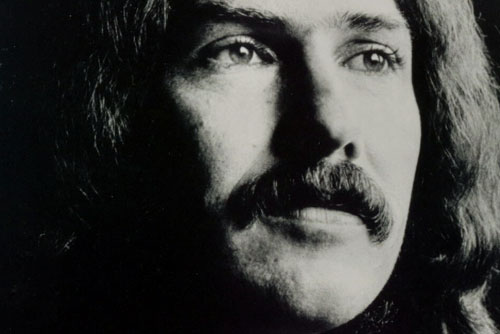
Steel guitar sessions
Interview by John Wisniewski
(October 2020)
Even if you don't know think you know steel guitarist Al Perkins, if you're an old-school country fan or a classic rock fan, you do actually know him. And if you still don't, you'll soon be jealous of his resume. Early boosters included Kenny Rogers (who produced his band) and early band-mates included Don Henley, who would later have a little band called the Eagles, who Perkins would also play with. After a stint with the Flying Burrito Brothers (heard on the 1971 live recordings of Last of the Red Hot Burritos), he joined Steven Stills' Manassas band and recorded with the Rolling Stones (he appears on Exile On Main St.) and recorded with Gram Parsons for his two solo albums. After taking up as a producer, he did extensive work with Dolly Parton (including when she became a pop crossover sensation) and logged sessions with the likes of Bob Dylan, John Prine, Randy Newman, John Denver, Cher, Leonard Cohen, James Taylor, Tori Amos, Michelle Shocked, Emmylou Harris, Yo La Tengo, Dwight Yoakum, Iris Dement, Wynonna Judd and Donna Summer (he appears on the Bad Girls album). With a busy schedule like that, it's no wonder that he didn't get to finally do a solo album in the early millennium as well as forming his own groups Big Dog 3 and the HiPower band. Now you're impressed, right? Time to learn more about Perkins' storied history from the man himself,,,
PSF: When did you begin playing music?
AP: I began Hawaiian Steel Guitar lessons at 9 years of age
PSF: What led to your interest in steel guitar?
AP: It was a salesman from the Dunigan School of Music in Lubbock, TX that walked the dusty streets of Odessa, TX and knocked on doors seeking any who might like to learn the music of "Hawaii Calls" which came America via short wave radio. At that point, I had no favorite players- just that I liked music on the radio. I later discovered that many young boys & girls throughout the Southwest took lessons in their own towns with teachers provided by the Dunigan School of Music.
I was blessed to have a young genius named Al Petty who taught me by ear and provided opportunities for me to play a song or two with Bill Myrick's band at several west TX Jamborees. Later, TV & Radio opportunities would arise. I also had very supportive parents.
PSF: What other music acts inspired you when you were young?
AP: I heard a lot of Western Swing in West Texas, but the artists that seem to resonate back in the '50's were George Jones, Buck Owens & Webb Pierce, mainly because they had sort of a rock edge to their music. Later, I listened to the Ventures, Shadows, & other instrumental groups in order to learn electric guitar.
PSF: Could you talk about your early experiences playing in bands?
AP: Hank Telford & The Rhythm Makers was the first band I was in. In Odessa Jr College 1963, I met drummer Pete Lair who asked if I'd like to join a rock group from the neighboring town, Midland, TX. The group was The Mystics & later ('65) Bob Bailey & I started The Shades.
After serving active duty for the Army National Guard late '66, I had a short lived R&B group called The New Image. Its keyboardist Jay Larremore & I auditioned with The Sparkles to go to California in'68.
I returned to Odessa, Texas in '69 where manager Herb Graham put together a top 40 club group called Foxx, with brothers "Pepper" & "Little" Joe Martin. While playing at clubs in Dallas, Kenny Rogers, and his drummer Mickey Jones, told an East Texas group, then called Felicity, that I was playing pedal steel in a rock band (novelty songs only). I joined them in '70 & went back to California, got the same North Hollywood apt I had in '68 and Kenny produced an album for us on Amos Records [Shiloh's 1970 self-titled album, which also included Don Henly]. The other group on the label was a duo called Longbranch Pennywhistle (with J.D. Souther & Glenn Frey).
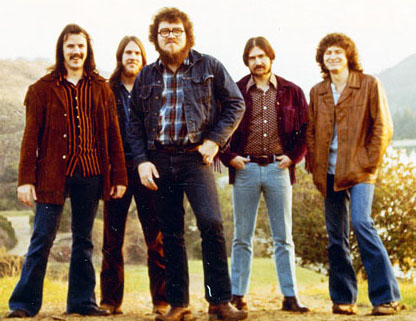
Shiloh promo photo
PSF: Could you tell us about playing with Mason Proffit (early '70's folk rock band)? How did you meet those guys?
AP: I met the Talbot Bros. through Billy Ray Hearn of Sparrow Records. John Talbot pursued a solo career with Sparrow Records. I played several shows with Terry as Mason Proffit, then he began recording for Sparrow as a solo artist also. I produced his first 2 gospel albums for him.
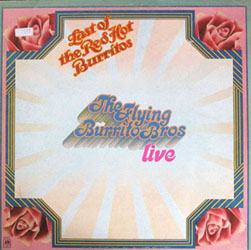
PSF: How did you get to work with the Flying Burrito Brothers?
AP: I was getting recording dates with & through The First Edition (Kenny Rogers band) & being another of a sparse supply of long-haired pedal steel players, I received a call from the FBB's manager, Ed Tickner. He said "Sneaky" Pete Kleinow was leaving the FBB's and would I care to audition. That Saturday, I went out to the Clubhouse on the Pacific Ocean in L.A. where they were performing, played, was given their albums to listen to & was on the road with them by Monday or Tuesday the next week!
PSF: The Burritos are often credited with being one of the first groups to meld country and rock to a mainstream audience. What kind of crowds do you remember seeing at Burrito shows?
AP: The FBB's were very successful with universities, festivals & popular folk-rock clubs. The crowds were very exuberant and seemed to be very much into the hi energy versions of folk rock, bluegrass, R&B and country (ref The Last of the Red Hot Burrito's live LP). The FBB fans were exuberant and came to hear the group rather than the music being secondary. After my 2nd arrival in California in 1970, it was a great opportunity to play concerts with a group who toured across the U.S.A.
PSF: What was working with Gram Parsons like?
AP: I met Gram for the first time while touring with the FBB's in the Southeast. He attended a concert and sat in with us after [guitarist] Rick Roberts took his place in the band. Soon after, Gram called me in for the recordings of his two solo albums with Emmylou Harris in LA [1973's GP, 1974's Grievous Angel]. I found him to be a very kind person and enjoyed his music. His passing was tragic.
PSF: You had worked with Don Henley pre-Eagles in Shiloh. What was he like then and later with the Eagles?
AP: He was always professional, and still is.
PSF: The Eagles seemed to follow the same path of country-rock that the Burritos previous had done but were much more popular at it- are there any reasons why that is in your mind?
AP: Many times, it simply has to do with timing, songs & the promotion thereof.
PSF: How did you meet Stephen stills to work with Manassas?
AP: After I began playing with the Flying Burrito Bros in 1971, we attended a Stephen Stills concert at the Public Auditorium in Cleveland on our off night, July 20, 1971. [Drummer] Michael Clarke got backstage and Stephen asked if we would come to their hotel after the show. It was then that I first met Stephen. He then invited us to come down to Miami and record with him on his ongoing project which later became the Manassas 1st album [1972].
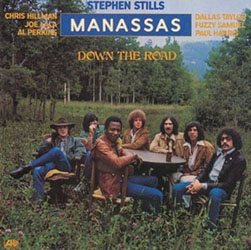
PSF: How was that experience with Manassas compared to other bands you've played in?
AP: For me, it was a lot of fun. Through its success, we were able to meet many new fans & artists. Stephen is a very talented visionary as well as a very talented musician.
PSF: You played on the Rolling Stones track "Torn and Frayed." How did that come about and what was it like working with them?
AP: I believe Gram Parsons was the catalyst there- it was a very good opportunity at that time. They & their production team we're excellent. I had just moved to a ZB 11 stg pedal steel & was struggling to play it. Thankfully, it came out okay.
PSF: Why did you change to production work in the '70's?
AP: I was attending Calvary Chapel in Costa Mesa, CA, when I was asked by Tommy Coomes (Maranatha Music) if I would produce an album for a Christian rock group called The Way. At the time, we were to record the 2nd SHF [Souther Hillman Furay] album with Atlantic's renown producer Tom Dowd. I was "blessed" by the invitation of Tom Dowd to virtually teach me his production/engineering style. From that first album production, I began getting calls to produce from any other artists and styles. It kept me busy when touring lightened up.
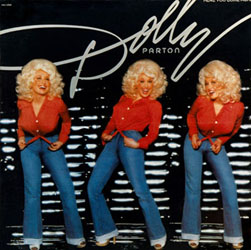
PSF: You spent a while in the '70's and '80's working with Dolly Parton. How would you describe that experience?
AP: Always a pleasure to work with artists like Dolly! No doubt about it, she's very cordial and has a great sense of humor at all times.
PSF: You also worked with Dolly just as she crossed over into being a pop success in the '70's. How do you think she handled that?
AP: Ha! I think she feels comfortable with any genre.
PSF: You got to record with John Prine twice (1999's In Spite of Ourselves, 2016's For Better, or Worse). What was memorable about those experiences?
AP: I had not recorded with John before the 2 "duo" albums. It was a fun time to play with such a great artist. I also enjoyed performing with him & his band at the Ryman Auditorium.
PSF: You also recorded with Bob Dylan in the mid '80's. What was he like to work with?
AP: Bob was quite an individual. Roger McGuinn & I met him at Larry Meyers' home for a casual gathering after he had accepted Jesus as his Saviour. He spoke a bit about an idea he was working on for an album, which later became one of my all-time favorites, Slow Train Coming.
However, I played on Knocked Out Loaded at a Hollywood home studio up in Laurel Canyon. The recording experience was very unusual. After everyone got tuned and he arrived, we began "running the songs" once or twice each. After we finished, I was told by the producer "that was it, thanks everybody!" I was thinking, "Bu-bu-but!"
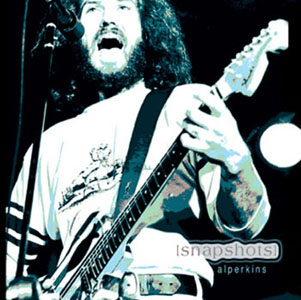
PSF: You did your first solo album in the early 2000's. How did it come about?
AP: It was a time while I was touring with Kevin Montgomery & band. We had a lovely English couple, Ian & Carol Reay, who served as tour managers and set up merchandise tables for the shows. I decided the easiest way to participate was to present a collection of rare recordings that represented my career in an interesting way. Snapshots (2002) also featured a pictorial of some of the selections.
PSF: What was it like doing the Gram Parsons tribute in 2004?
AP: I think you're referring to the CA Amphitheater shows in LA & Santa Barbara. It was an interesting cross section of artists for sure. I always enjoy playing with James Burton!
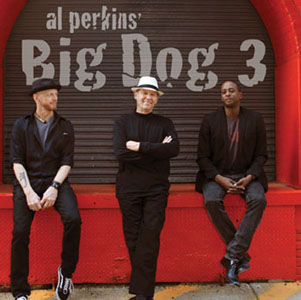
PSF: Talk about your Big Dog 3 band. How did that come about?
AP: That's the most recent effort of writing/singing songs whereby I play mostly electric guitar. We were all recording with Brigitte DeMeyer when we decided to do the BD3 project. Later, we and Brigitte toured briefly in England & Holland, again with the help of Ian & Carol Reay.
PSF: HiPower Band is also a recent group of yours. Are you still working with them?
AP: Unfortunately, my longtime friend & partner in the band, Leonard Arnold, passed away in 2015. We had almost 10 years to play out locally together. There are no plans to revive it.
However, his wife Kristine was also in the band. So now and then, she & her sister, Janis Oliver (The Sweethearts of the Rodeo) occasionally ask me to sit in with them acoustically at local events.
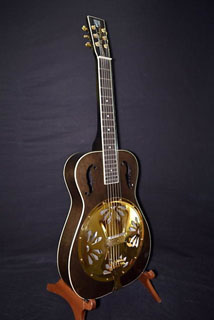
PSF: You've designed your own instrument, a special guitar with Gibson. Could you tell us about this?
AP: Yes, this was accomplished with the help of Richie Owens and Mike Replogle at Gibson's OMI Division instrument company around 1990. It is a black resophonic Dobro guitar with custom white/black/white purfling (inlay) & custom resonator. The top metal cover plate and tuning keys are gold. Another difference from other resophonic guitars is the "Poinsettia" style gold cover plate. It was also offered with custom etchings. The Al Perkins model Dobro was offered both as a guitar style lower string height, or higher for using a metal slide bar.
PSF: Do you have any all-time favorite bands that you really like?
AP: That would depend upon the time frame. From the earliest, probably... Buck Owens & The Buckaroos, The Ventures, The Beatles.
PSF: Do you have any future plans and projects at the moment?
AP: None specifically, but I do enjoy playing sessions & occasional concerts.
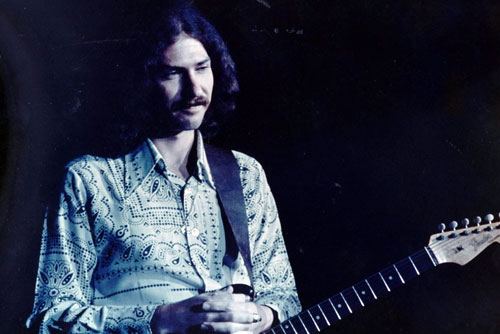
AP on stage
PSF: Out of all of the sessions that you did, what were the best ones that you're most proud of?
AP: Well, that's very difficult to answer! I'd rather say that some of the "spur of the moment" sessions were surprisingly interesting. The "Torn And Frayed" Stones session and playing banjo with Billy Preston on "Nothing From Nothing" were two such ones!
Another unusual session was the Eagles' "Ol' 55." Later, Producer Bill Szymczyk chose to use both tracks of pedal steel that I laid down t'ward the latter part of the song... Amazingly, they worked beautifully together in the final mix!
I just ran across "Dancin' In The Wind" by the very talented, but short-lived group, Great Plains. Released in 1996 on Magnatone Records and produced by Brent Maher, one can only guess why it didn't sail to the top! In my estimation, they had many traits that the early Eagles had.
PSF: What was your finest moment as a musician?
AP: Ha! I would leave that to my peers. It's always an honor when you are recognized in music, but in reality all our talents come from God!